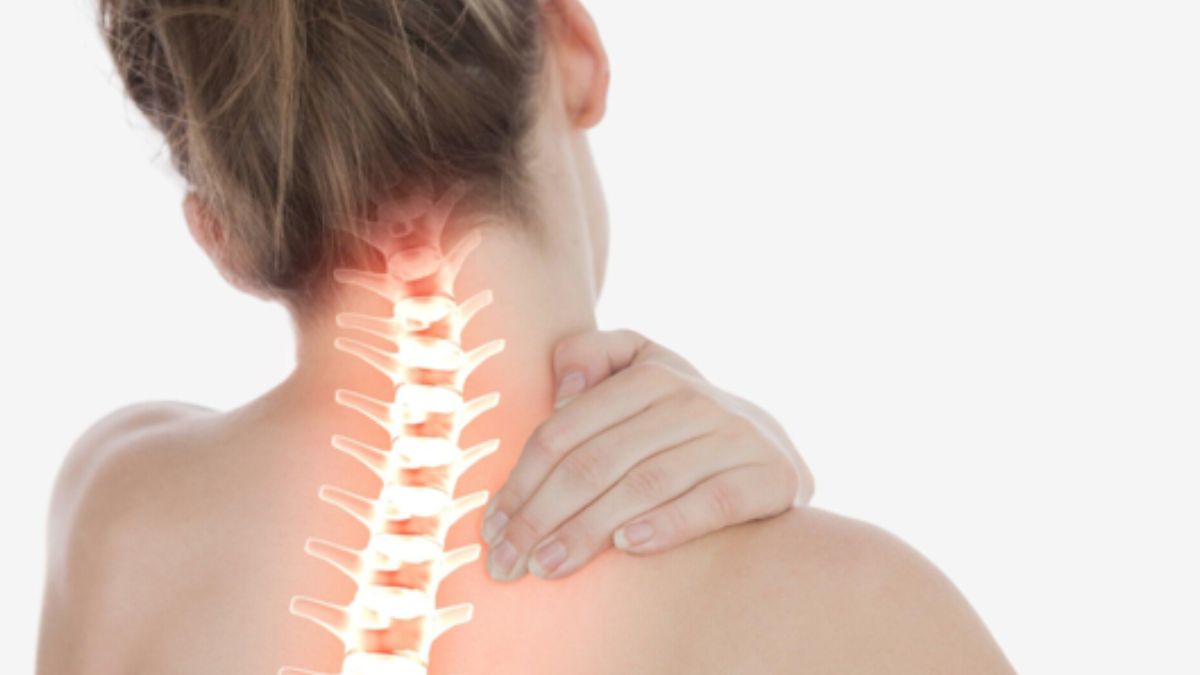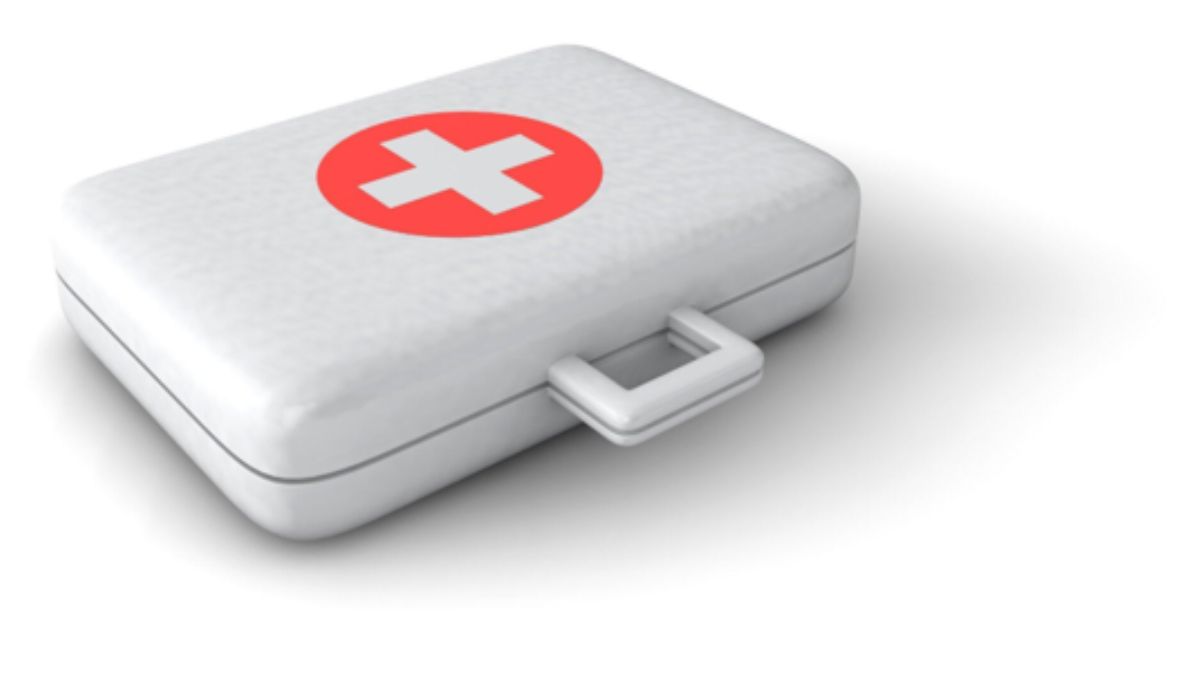HEALTH
Advanced Decompression Therapy for a Healthier Spine

Advanced Decompression Therapy is a gentle and effective way to improve spinal health. It helps relieve pressure on the spine, reduce pain, and restore mobility. This non-surgical treatment is ideal for conditions like herniated discs, sciatica, and chronic back pain.
By promoting proper alignment, it supports natural healing and long-term relief. Want to feel better and move with ease? Learn how Advanced Decompression Therapy can help you achieve a healthier spine!
Consult a Professional First
Before starting spinal therapy, it is important to consult a professional first. A decompression treatment doctor can assess your condition and recommend the best approach. They will check for underlying issues that may affect your treatment. A proper evaluation ensures the therapy is safe and effective for you.
The doctor will also customize the treatment to fit your needs. Regular check-ups help track progress and make adjustments if needed. Professional guidance reduces risks and improves results. Always seek expert advice before beginning any spinal decompression therapy.
Stay Consistent With Treatments
Staying consistent with treatments is key to getting the best results. Regular sessions help reduce pain and improve spinal health over time. Skipping treatments can slow progress and cause setbacks. Your body needs time to heal and adjust to the therapy.
Following the treatment plan ensures long-term relief and better mobility. Even if you start feeling better, it’s important to complete the full program. Consistency helps strengthen your spine and prevent future issues. Stay committed, and you’ll see lasting benefits from your therapy.
Stay Hydrated
Staying hydrated is essential for a healthy spine. Water keeps your spinal discs soft and flexible. Dehydration can cause discs to shrink and increase back pain. Drinking enough water helps cushion the spine and absorb shock.
It also supports nutrient flow to the muscles and joints. Proper hydration reduces stiffness and improves mobility. Aim to drink water throughout the day for the best results. A well-hydrated body heals faster and feels better.
Use Supportive Seating
Using supportive seating helps protect your spine and improve posture. A good chair provides proper back support and reduces strain. Sitting for long periods in a poor chair can cause pain and stiffness. Ergonomic chairs help keep the spine aligned and prevent slouching.
Adjustable seats allow you to find a comfortable position. A cushion or lumbar support can add extra comfort. Keeping your feet flat on the floor also improves posture. Choosing the right seating helps keep your spine healthy and pain-free.
Engage in Low-Impact Activities
Engaging in low-impact activities helps keep your spine strong and flexible. Exercises like walking, swimming, and yoga reduce strain on your back. These activities improve circulation and support spinal healing. Low-impact movements strengthen muscles without putting pressure on the joints.
Regular activity helps prevent stiffness and pain. Stretching and gentle exercises improve posture and mobility. Avoiding high-impact workouts protects your spine from unnecessary stress. Staying active with low-impact exercises promotes long-term spinal health.
Avoid Heavy Lifting
Avoiding heavy lifting helps protect your spine from strain and injury. Lifting heavy objects can put too much pressure on your back. It may lead to muscle strain, disc problems, or chronic pain. If you must lift something, use proper techniques to reduce stress.
Bend your knees, keep your back straight, and lift with your legs. Using lifting aids or asking for help can also prevent injuries. Overloading your spine can slow recovery and cause long-term issues. Being mindful of heavy lifting keeps your back strong and healthy.
Get Enough Rest
Getting enough rest is important for spinal health. Sleep allows your body to heal and recover from daily stress. A good mattress and pillow support proper spinal alignment. Poor sleep can lead to stiffness, pain, and muscle tension.
Resting well helps reduce inflammation and promotes healing. Avoiding screens before bed can improve sleep quality. A consistent sleep schedule keeps your spine and body feeling refreshed. Prioritizing rest leads to better posture, mobility, and overall well-being.
Eat a Spine-Friendly Diet
Eating a spine-friendly diet helps keep your back strong and healthy. Calcium-rich foods like dairy, leafy greens, and almonds support bone strength. Vitamin D from sunlight, fish, and eggs helps your body absorb calcium. Anti-inflammatory foods like berries, nuts, and olive oil reduce back pain.
Drinking plenty of water keeps spinal discs hydrated and flexible. Protein from lean meats, beans, and nuts helps repair muscles and tissues. Avoiding processed foods and excess sugar prevents inflammation and stiffness. A balanced diet supports spinal health and overall well-being.
Manage Stress Levels
Managing stress levels is important for a healthy spine. Stress can cause muscle tension and lead to back pain. Relaxation techniques like deep breathing and meditation help release tension. Regular exercise reduces stress and keeps your spine flexible.
A good night’s sleep also helps your body recover from daily strain. Taking breaks and avoiding overworking your body prevents stiffness. Staying positive and practicing mindfulness improves overall well-being. Keeping stress under control leads to better posture and a pain-free spine.
Wear Supportive Footwear
Wearing supportive footwear helps maintain a healthy spine. Good shoes provide proper cushioning and reduce strain on your back. Flat or unsupportive shoes can cause poor posture and discomfort. Arch support helps distribute weight evenly and prevents back pain.
Proper footwear absorbs shock and reduces stress on the spine. Wearing the right shoes improves balance and stability. Avoiding high heels and worn-out shoes protects your posture. Supportive footwear keeps your spine aligned and reduces the risk of pain or injury.
Monitor Your Progress
Monitoring your progress helps you stay on track with spinal health. Keeping track of pain levels and mobility shows how well treatment is working. Regular check-ins with your doctor ensure you are improving. Small changes, like better posture or less stiffness, are signs of progress.
Writing down improvements helps you stay motivated. If pain returns, adjusting your routine can help. Celebrating progress, no matter how small, keeps you committed. Staying aware of your progress leads to long-term spinal health.
Learn More About Advanced Decompression Therapy
Advanced Decompression Therapy is a powerful way to relieve back pain and improve mobility. It helps reduce pressure on the spine and supports natural healing.
This non-surgical treatment is safe, effective, and offers lasting relief. With regular sessions and healthy habits, you can enjoy a stronger, pain-free spine.
Did you find this article helpful? Check out the rest of our blog for more!
HEALTH
What You’ll Learn in CPR & First Aid Training Courses

Have you ever wondered what you would do if someone collapsed in front of you or had a serious injury? It’s a scary thought, but being prepared makes a huge difference. CPR & First Aid training courses teach you exactly how to handle emergencies like this.
In this blog post, you’ll discover what skills you’ll learn, how these courses work, and why this training is so important. By the end, you’ll feel ready to take the next step toward saving lives.
Learn to Act Fast in Emergencies
One of the first things you’ll learn in CPR & First Aid training is how to stay calm when an emergency happens. These courses show you how to think clearly and take action when seconds matter. Whether someone has trouble breathing, is bleeding badly, or has passed out, knowing what to do right away can help save their life.
You’ll learn how to assess the situation, check for danger, and start helping before professionals arrive. These steps can make all the difference.
Discover the Power of CPR
CPR stands for Cardiopulmonary Resuscitation. It sounds complicated, but you’ll learn that it’s easy to do. CPR is a method used when a person’s heart stops beating.
You’ll find out how to push down on the chest in a steady rhythm and how to give breaths if needed. These actions help move oxygen through the body until help comes. CPR is a lifesaving skill, and anyone can do it once they are trained.
Understand How to Use an AED
An AED is a device that gives a shock to the heart to help it start beating again. During your training, you’ll learn how to use it step by step. The machine talks to you and tells you what to do, which makes it easier.
You’ll also learn where to find AEDs in public places and why quick use is so important. Using an AED right away can increase a person’s chances of survival, and you’ll be ready to do just that.
Learn to Handle Common Injuries
Every day, accidents happen all the time. Someone might cut themselves, fall, or have a burn. In CPR & First Aid training, you’ll learn how to help with these injuries.
You’ll find out how to clean and cover a wound, treat a burn, or wrap a sprain. You’ll also learn what not to do so you don’t make things worse. Knowing how to give the right care right away helps someone feel better and heal faster.
Be Ready for Choking and Allergic Reactions
Choking is another emergency that can happen suddenly. These courses show you how to spot the signs and what to do to help. You’ll learn how to perform back blows and the Heimlich method.
Allergic reactions can also be dangerous. You’ll learn how to use an epinephrine auto-injector and how to help the person stay safe until help comes. These are real situations that anyone could face, and now you’ll know what to do.
If you’re curious about even more topics covered in these lessons, get more info by visiting your local training center or health organization.
First Aid Training: The Power to Save Lives
Taking CPR & First Aid training courses gives you the skills to help others during some of life’s scariest moments. You don’t need to be a doctor or nurse. Just knowing what to do during an emergency can save lives.
These courses help prepare you for real-life emergencies in a simple, hands-on way. Did this guide help you? Browse the rest of this section for more advice on a variety of topics.
HEALTH
The Role of Community in Veteran Health and Wellness

Did you know that a strong community connection can play a transformative role in the health and wellness of our veterans? In recent years, studies have shown that social integration significantly boosts mental health and overall well-being, especially for those who have served in the military.
Veterans often face unique challenges, and having a supportive community can be a crucial factor in their recovery and sustained health. This article explores the vital importance of a community in veteran health and how senior living options can enhance their overall quality of life. Keep on reading.
The Importance of Community in Veteran Well-Being
For veterans transitioning back into civilian life, the shift can often feel overwhelming. Many struggle with feelings of isolation and alienation from those who haven’t shared similar experiences. This is where a sense of community becomes essential.
A supportive network helps veterans feel connected and valued. In senior living environments, fostering a community spirit can lead to:
A Sense of Belonging
Veterans often feel better when they know others share their past. Living with peers who understand can make them feel safe. This helps build real friendships and trust.
Improved Mental Health
Being around others can ease sad or anxious thoughts. Talking, laughing, and sharing stories helps the mind. These small moments lift spirits each day.
Physical Health Benefits
Group activities like walks or games keep the body moving. Staying active with others can be more fun. It helps veterans stay strong and feel better.
Easy Access to Resources
A strong group can guide members to helpful tools. It’s easier to ask for help when others understand. Veterans find what they need without feeling lost.
How Senior Living Enhances Social Connections
Many places where seniors live are made to feel like a strong community. Some have special programs just for veterans. These programs help them feel supported and connected with others.
There are group trips, fitness classes, and other fun things planned for veterans. These keep them busy, happy, and moving. It also helps them meet people who understand them.
Some places also give extra care for mental health. Veterans can talk to people who know about things like PTSD. Being around others with similar stories can help them feel less alone.
Building Supportive Care Frameworks
Supportive care is more than just meeting physical needs; it’s about holistic wellness that encompasses emotional, mental, and social aspects. Within a community-focused approach, veterans can tap into:
- Peer support groups
- Integrative wellness programs
- Access to healthcare
The Unique Proposition of Community-Focused Senior Living
Choosing a senior living arrangement that emphasizes community focus provides veterans with the unique opportunity to enhance their quality of life. Not only can they maintain independence, but they can also engage in a variety of activities designed to foster relationships and an active lifestyle.
Facilities that prioritize a community focus in veteran health often include programming tailored specifically for them. They offer more than just a place to live. Veteran programs for seniors create a supportive atmosphere promoting veteran wellness through engagement, shared experiences, and friendship.
Invest in Your Health and Well-Being Today!
If you or a loved one is a veteran looking for a welcoming community, consider exploring options that offer comprehensive support and a vibrant community in veteran life. With a focus on wellness and connection, you can conquer the challenges of daily living and thrive among peers who understand and appreciate your journey. Your health and well-being deserve a community that cares.
For more related topics, check out the rest of our blog!
HEALTH
How Cannabis Extracts are Redefining Medical Applications

How can one plant help with so many health needs?
Cannabis extracts are now used in new ways to treat different medical problems. These extracts come in forms like oils, drops, and pills. Many people use them to feel better without strong drugs.
Doctors and patients are starting to see the value of these products. They are easy to use and made with care. If you’re looking for new ways to feel better, cannabis extracts might be worth a try. Want to learn more about how they work and how they can help? Keep reading!
Managing Pain
Many people deal with pain each day, and finding safe ways to manage it matters. Cannabis extracts are giving new hope by offering support for pain that doesn’t always respond to common treatments.
These extracts may help with joint pain, nerve pain, and pain from injuries. They work by interacting with the body’s systems in a natural way. Unlike some strong drugs, they are less likely to cause harm with long use.
Doctors are now looking at these extracts as a helpful tool for people with ongoing pain. As more studies are done, more is learned about their benefits. To stay informed about growing options for care, reading articles like these can help guide smart choices.
Helping with Sleep
Trouble falling asleep or staying asleep can affect daily life. Cannabis extracts are now being used to support better sleep by helping the body relax at night. Some people say they fall asleep faster and wake up less often.
These extracts may work by calming certain parts of the brain that stay active during rest. Many users prefer them over common sleep aids because they feel more natural. They are often taken as drops or capsules before bedtime.
People who have tried other sleep methods without success are now turning to this option. As more is learned, cannabis extracts may become a trusted part of nightly routines. For those hoping to wake up feeling more rested, they could be a step toward better sleep.
Easing Anxiety and Stress
Busy days and constant pressure can lead to feeling overwhelmed. Cannabis extracts are now being used to help ease anxiety and lower stress levels. Some people say they feel calmer and more balanced after using them.
These extracts may work by helping the brain respond better to stress signals. They are often taken in small amounts during the day and may support a more peaceful state of mind in daily life.
Supporting Appetite and Nausea Relief
Feeling sick or not wanting to eat can make recovery harder. Cannabis extracts are now being used to help reduce nausea and improve appetite. This can be helpful for people going through treatments that make eating difficult.
The extracts may work by calming the stomach and making food seem more appealing. They are often taken in small doses and come in easy-to-use forms. For some, they offer simple support during times of low appetite or queasiness.
Exploring New Paths with Cannabis Extracts
Cannabis extracts are opening new doors in medical care, offering support in ways that were once hard to find. From easing daily struggles to helping with serious health challenges, these extracts are changing how treatment can look and feel.
Their growing use shows how natural options are becoming part of trusted care plans. As research continues, more people may find comfort and balance through these products. Exploring new paths with cannabis extracts in modern care shows how far healing can go.
Did you find this article helpful? Visit our website for more awesome content like this.
-

 HEALTH1 year ago
HEALTH1 year agoIntegrating Semaglutide into Your Weight Loss Plan: A Practical Guide
-

 HOME IMPROVEMENT1 year ago
HOME IMPROVEMENT1 year agoHow to Choose the Perfect Neutral Area Rug for Every Room
-

 LAW1 year ago
LAW1 year agoPost-Divorce Considerations in California: Modifications and Long-Term Planning
-

 LAW1 year ago
LAW1 year agoTeenage Drivers and Car Accidents in California: Risks and Parental Liability
-

 CONSTRUCTION1 year ago
CONSTRUCTION1 year agoConstruction Site Safety Regulations in New York and Your Rights as a Worker
-

 FINANCE1 year ago
FINANCE1 year agoDigital Asset Management in Florida Estate Planning
-

 LAW1 year ago
LAW1 year agoKentucky’s School Football: Concussions, Injuries, and Legal Options
-

 LAW1 year ago
LAW1 year agoGang Activity and Criminal Charges in CA: Protecting Your Rights
